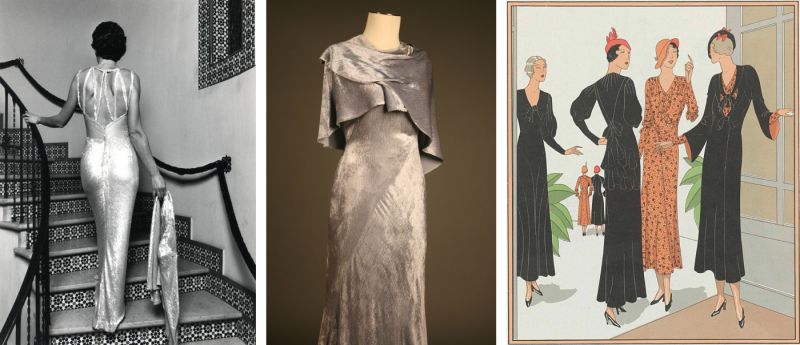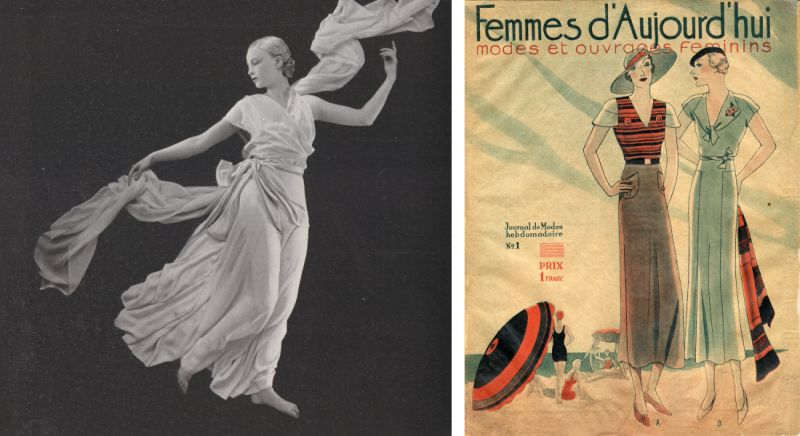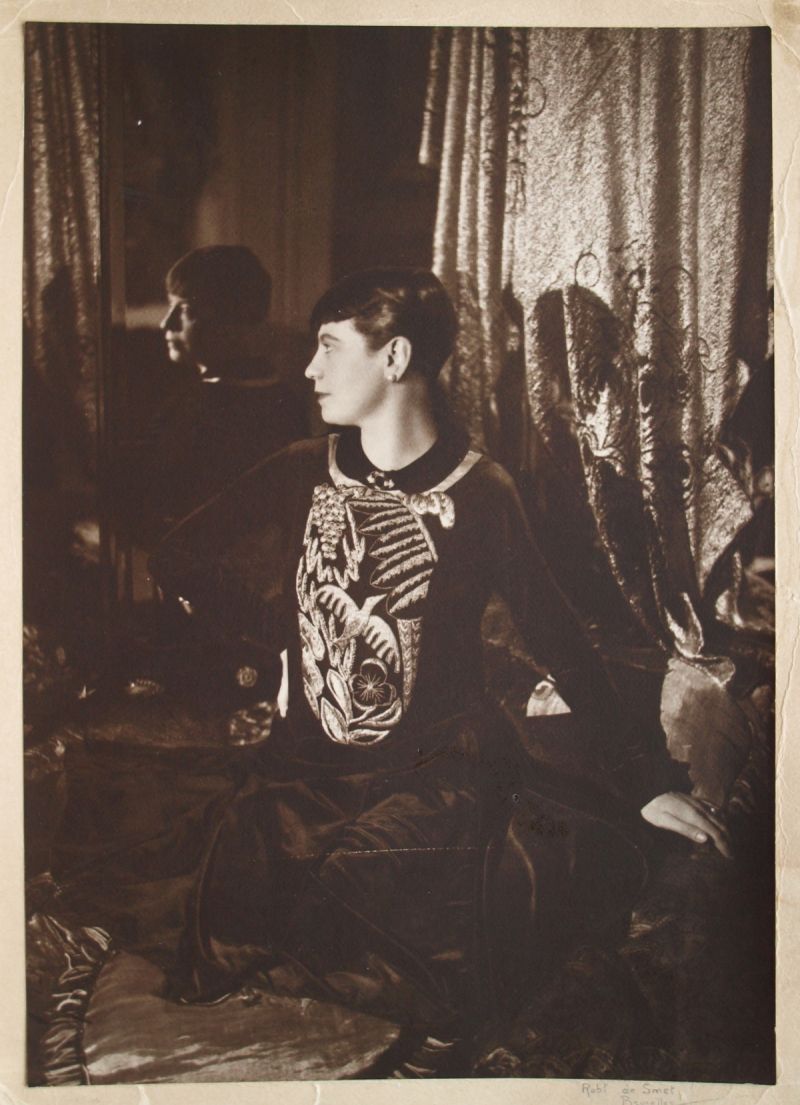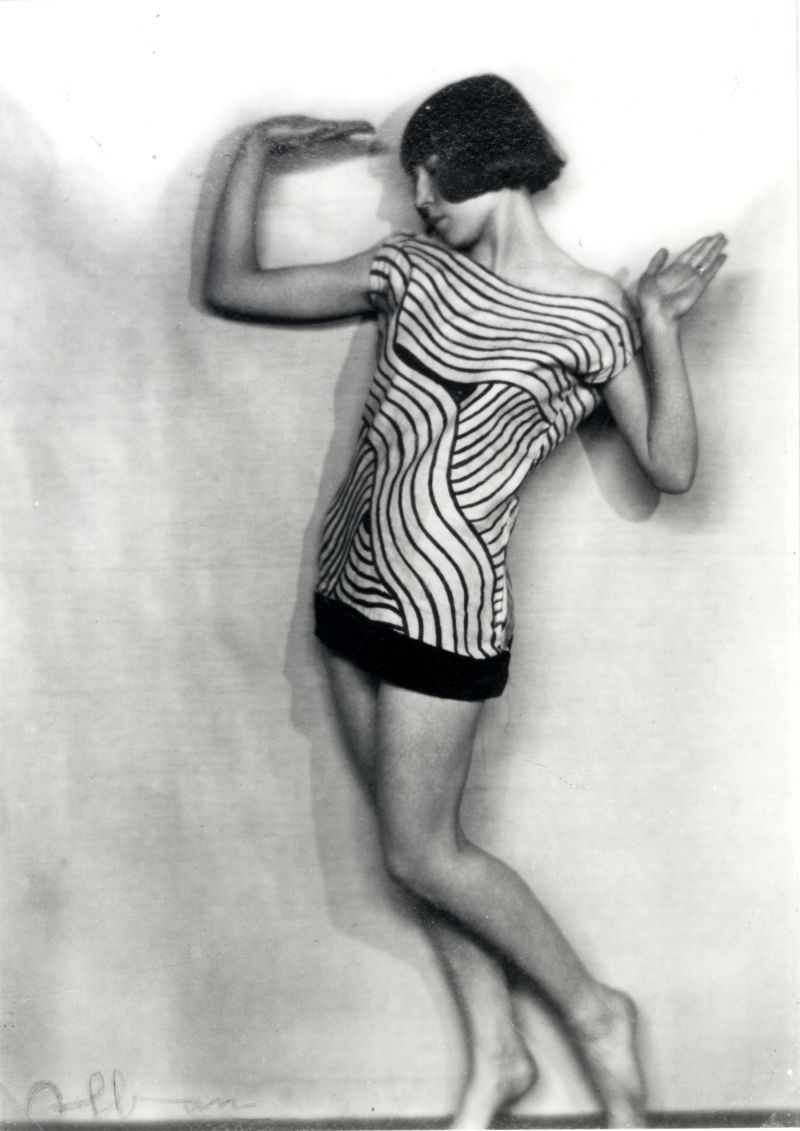#modernity2025 #artdeco2025
In 2025, to celebrate its centenary, Art Deco takes pride of place in the capital, with a full and vibrant programme developed by Urban, visit.brussels and their partners.
To mark the occasion and throughout the year, Urban is highlighting themes related to this rich calendar of events.
This forth focus shines a spotlight on the fashion of the era, with two exhibitions and a talk that showcase the creativity of interwar design.
Fashion in the 1920s and 1930s
During the interwar period, fashion underwent a true revolution. Freed from their 19th-century corsets, women's styles embraced simpler lines and more comfortable cuts.
However, the two decades had very different aesthetics, reflecting broader trends in the design and architecture of the time. In the 1920s, Art Deco made its mark on fashion, with geometric shapes and contrasting colours. By the 1930s, styles had shifted towards a kind of neoclassicism, echoing the classical monumental quality that was then in vogue in architecture.
1920s – the Garçonne
The ideal of the 1920s was the Garçonne, a modern young woman with short hair and a straight, boyish silhouette. It was the Roaring Twenties, the era of the Charleston, and the Garçonne, in celebration of freedom, would deliberately don a "dancing dress". This is a tubular dress with straps, sometimes shortened to just above the knee, often colourful and adorned with fringes and shimmering rhinestone or sequin patterns. In keeping with this look, female curves are concealed with a flat chest and a lowered waistline that sits on the hips or is not marked at all.
1930s – glamour and fluidity
By 1930, styles had changed and were replaced by a more mature, elegant and feminine ideal. Dresses grew longer and became more flowing. Cuts became more skilful, often asymmetric, with fabrics cut "on the bias" which gently clung to the body's curves. The trend was for "classical" silhouettes, made from draped panels of fabric. This was also the decade when black, once the colour of mourning, became the epitome of elegance, inspired by black-and-white cinema and its Hollywood stars. It was the height of glamour: women aspired to dress like Marlene Dietrich or Greta Garbo.
Parisian pioneers and fashion magazines
Among the leading figures of interwar couture were three women, all based in Paris, the undisputed capital of fashion. Madeleine Vionnet invented the bias cut and was an expert in the art of Grecian-style draped fabrics. Jeanne Lanvin, a virtuoso of elegance and artisanal luxury, was a major rival to Gabrielle "Coco" Chanel, who revolutionised modern women's wardrobes with clean, practical dresses, such as her famous "little black dress" of 1926.
At the same time, Sonia Delaunay, the avant-garde painter and multidisciplinary designer, applied her research on colour and geometric shapes to fashion and textiles, blurring the boundaries between art and clothing.
In the 1930s, haute couture trends were featured throughout fashion magazines, which enjoyed enormous success amongst women of all social classes. Belgium's first women's weekly "Femmes d’Aujourd’hui" was published from 1933. Fashion was becoming more accessible, with ready-to-wear on the rise and bespoke tailoring beginning to wane. For the first time in history, elegance was within reach for women of all budgets.
Art Deco Brussels 2025 programme
Throughout the year, the Art Deco Brussels 2025 programme takes the public on a journey of discovery which explores the shapes and fabrics that characterise this movement, and particularly the fashion of the era, through two exhibitions and a talk.
EXHIBITION • "ART DECO 1925 >< FASHION 2025" at Halles Saint-Géry
Presented by Mode-in.Brussels and ARCHistory, with the support of Urban, the exhibition runs from 27 May to 16 November 2025 at Halles Saint-Géry. It provides a fresh look at Art Deco fashion through the lens of ten Brussels-based designers. Echoing the images and publications of the era, where drawings and photographs captured the creativity of couturiers, each designer showcases a single silhouette that reflects their modern vision of the movement's codes.
EXHIBITION • "Fashion in the 1920s & 1930s" at the van Buuren Museum and Gardens
In 2025, the van Buuren Museum and Gardens celebrates the 50th anniversary of its foundation with a series of Art Deco-themed events, including a unique exhibition on interwar fashion, running from 6 November 2025 to 2 February 2026. In association with the Fashion and Lace Museum, the exhibition will showcase the evolution of the female silhouette during this period, with iconic creations combining innovation and sophistication, set in dialogue with the architecture of the villa.
CONFERENCE • "Norine Couture: the embodiment of the Belgian avant-garde, ca 1915-1952" by Nele Bernheim at the Albert Hall
As part of the Heritage Days 2025, the Albert Hall, a former Art Deco cinema and function hall, will host a talk by Nele Bernheim on the Maison Norine fashion house. A PhD Researcher in History at the University of Antwerp and in Art History at Ghent University, the speaker will lift the veil on this avant-garde Brussels fashion house managed from 1915 to 1952 by Honorine Deschryver and Paul-Gustave van Hecke. The couple were friends and colleagues of artists, including René Magritte, Raoul Dufy, Man Ray and Max Ernst. In the interwar period, their creations were inspired by modernism, cubism and surrealism, reflecting their passion for art.
The conference will take place on Saturday 20 September, in the Roseland Ballroom of the Albert Hall:
- from 2.30 to 4 pm in French
- from 4.30 to 6 pm in Dutch
Also interesting to know
For more details about the fashion-related collections in Brussels
Visit the Urban's inventory of movable heritage website : collections.heritage.brussels
This extensive database presents the treasures of movable cultural heritage in the Brussels region, preserved in the collections of public and private institutions.
These include items of Art Deco fashion from the Fashion and Lace Museum and even costumes, drawings and photographs by the artist Akarova stored at the CIVA.







